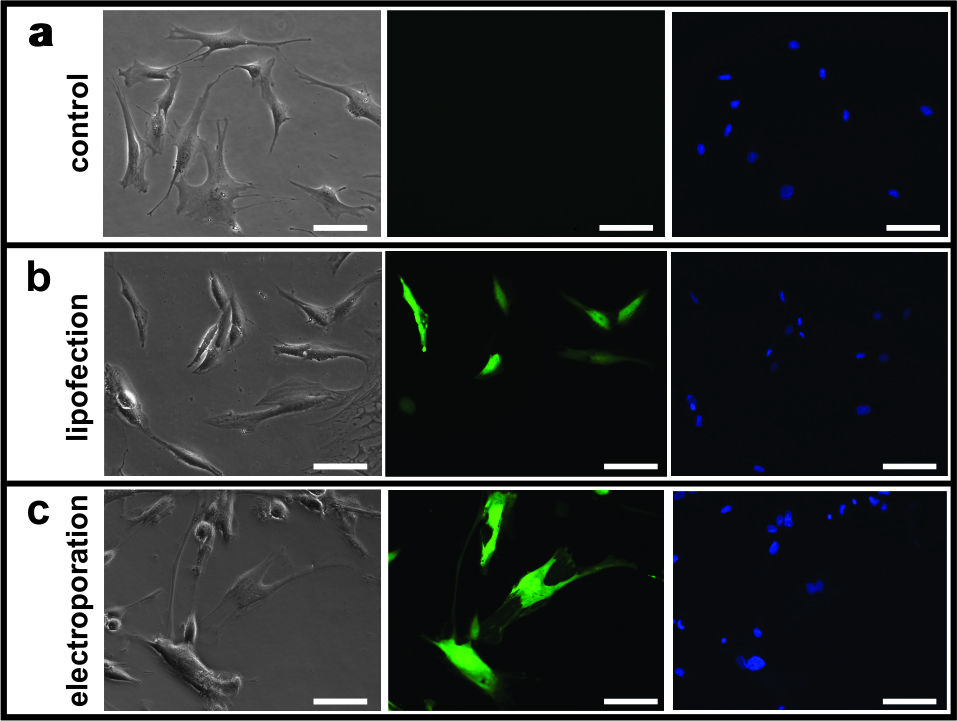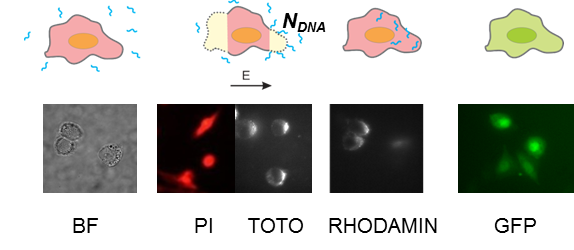 In the last decades, in vivo gene transfer with electroporation (gene electrotransfer) has emerged as a promising method of delivery for nonviral gene therapies. It was shown that locally delivered electric pulses increase membrane permeability and enable transfer of plasmid DNA or short strand RNA into the cells. It was demonstrated that electrogene therapy can be efficient for treatment of cancer and chronic diseases. Recently, gene electrotransfer was identified also as an ideal method for gene transfer in DNA vaccination, for cancer treatment, HIV and various infectious diseases. However, there is no complete description of the mechanism of gene electrotransfer on a molecular level.
In the last decades, in vivo gene transfer with electroporation (gene electrotransfer) has emerged as a promising method of delivery for nonviral gene therapies. It was shown that locally delivered electric pulses increase membrane permeability and enable transfer of plasmid DNA or short strand RNA into the cells. It was demonstrated that electrogene therapy can be efficient for treatment of cancer and chronic diseases. Recently, gene electrotransfer was identified also as an ideal method for gene transfer in DNA vaccination, for cancer treatment, HIV and various infectious diseases. However, there is no complete description of the mechanism of gene electrotransfer on a molecular level.
 Our group focuses on analysis of different processes on cellular level which are involved in gene electrotransfer and on optimization of delivery protocols for gene transfer (delivery of pDNA) and silencing.
Our group focuses on analysis of different processes on cellular level which are involved in gene electrotransfer and on optimization of delivery protocols for gene transfer (delivery of pDNA) and silencing.
Since skeletal muscle was found to be an ideal target tissue for electrotransfer so we focus also on optimization of electroporation parameters for the delivery of large plasmid DNA to short RNAi molecules.